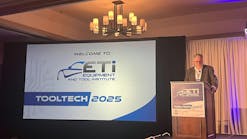2013 fleet fuel efficiency benchmark study
Described as the "most comprehensive study of Class 8 fuel efficiency adoption ever conducted," NACFE's Updated 2013 Fuel Efficiency Benchmark Study finds increased rate of adoption and improved fuel consumption of over 41,000 tractors and 125,000 trailers surveyed.
The Annual Fuel Efficiency Benchmark Study offers the industry a report of ten of the largest, most innovative fleets with respect to the use of products and practices to support high levels of fuel efficiency. The scope included regional and long haul tractors and trailers in dry goods and refrigerated cargo movement.
The report found that these fleets were saving on average $5,700 per year or $22,800 over four years in fuel expense. This is a $1,300 savings per truck per year change from the 2011 Fleet Fuel Efficiency Benchmark Study using the original eight fleets' data. The study highlights successful applications of new products and practices that provide fuel savings during real-world usage. It analyzed the adoption of 60 known technologies and practices available to fleets over the past eight years.
Technology implementation experiences and best practices were identified and shared by these fleets in terms of how they manage their large fuel expenses and how they take advantage of opportunities to reduce them. The study also offers insights for others considering the adoption of these products and practices, and gives feedback to manufacturers on customer requirements and expectations for future products. NACFE will be highlighting those successful applications of new products and practices that are providing fuel savings in real application.
The average purchased adoption rate of these products increased from 31 percent to 50 percent over the period of 2003 through 2012 and the average fuel economy performance of the trucks improved 0.53 mpg. Fleet operating practices, including technologies such as speed limiting, utilization of routing software systems, driver training and others, were universally adopted at about 90 percent. Tires and wheels including wide-base tires, low rolling resistance duals, aluminum wheels and tire inflation and monitoring systems, have made the most dramatic improvement in adoption moving as a group from 15 percent to about 35 percent. Trailer aerodynamics is an emerging area with very low adoption with many of the products available only since around 2007 and now with fleets choosing to add them 20 percent of the time on new trailers.
The information presented in the 2013 Fleet Fuel Efficiency Benchmark study can be useful as other fleets investigate which technologies to adopt as this represents real world experience by these leading fleets. "We're data-driven at Ryder, so we saw immediate value in quality data about what other good companies are doing," said Scott Perry, vice president of vehicle supply management, Ryder Management Inc. "That in turn will benefit everyone, because when manufacturers have more confidence about the market for their solutions, they can make investments that bring down costs. We can also have more informed conversations with regulators and take a more focused approach to influencing public policy in areas such as alternative fuels."
Mike Roeth, Executive Director of NACFE added, "One of the most insightful findings and useful data for all stakeholders from the report is the detailed technology adoption experience by the fleets, this can be used by your team to identify how your particular strategies match the other fleets in the study." Through NACFE's unbiased approach to aggregating information on fuel-efficient technologies, the report is adding direct value to the fleets' bottom line and offering significant insights for suppliers and other organizations as they work in this field.
A summary of the Study's high level findings is shown on the Council's homepage at www.nacfe.org and the details can be obtained as a package with the full report, data set along with membership to the NACFE Academy; an online University for freight efficiency. NACFE will convene global experts to further explore ways to scale the adoption of fuel-efficient technologies at various events throughout 2013 and during upcoming Driving Innovation meetings being planned for August 2013.

